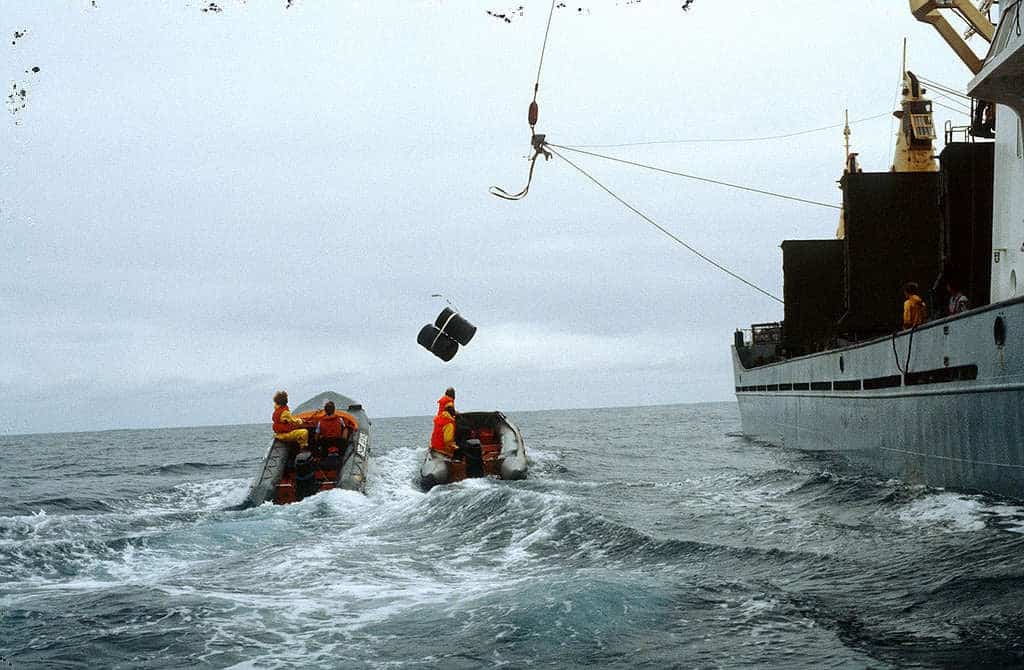
1. Japan Will Be Allowed to Release Nuclear Waste Water Into the Ocean
The International Atomic Energy Agency has approved a plan by Japan to release more than a million tons of treated nuclear wastewater into the ocean from the Fukushima power plant that was destroyed by tsunami waves in 2011. In a report released Tuesday, the IAEA said it has concluded after a two-year assessment that the plan is “consistent with relevant international safety standards” and that while societal, political, and environmental concerns have been raised, the discharged water “will have a negligible radiological impact on people and the environment.”
Meanwhile, many scientists are concerned about harmful elements being released that can bind to ocean sediment and living organisms, potentially damaging their DNA and causing mutations. Neighboring countries are also critical because this is a transboundary issue — wastewater released by Japan is not going to just stay in and around Japan.
Thank you for your generous gift that will help us continue the production of this weekly, free publication
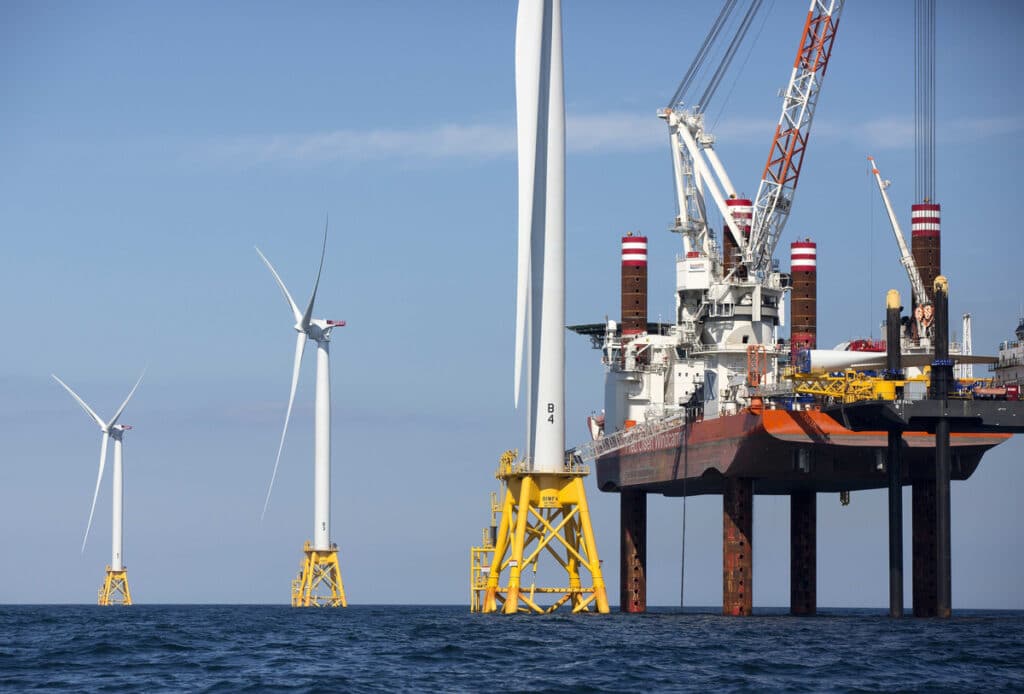
2. NOAA studies how to develop offshore wind energy while protecting endangered species
The National Oceanic and Atmospheric Administration is studying how to protect endangered species while building offshore wind farms in the Gulf of Mexico. On Monday, a new peer-reviewed paper was published that discusses NOAA’s scoring methods to assess potential protected species conflicts with offshore wind developments.
Its collaborative and integrated approach resulted in a 70% reduction in potential siting conflicts with protected species within the final selected wind energy area. NOAA hopes this collaborative work will provide a foundation for early engagement and strategic marine spatial planning for offshore wind energy to reduce adverse effects on protected species. It is a timely study.
As part of its efforts to reduce American dependence on fossil fuel, the Biden Administration announced last year that the first two of its planned wind farms will be off the coast of Galveston, Texas, and Lake Charles, Louisiana.
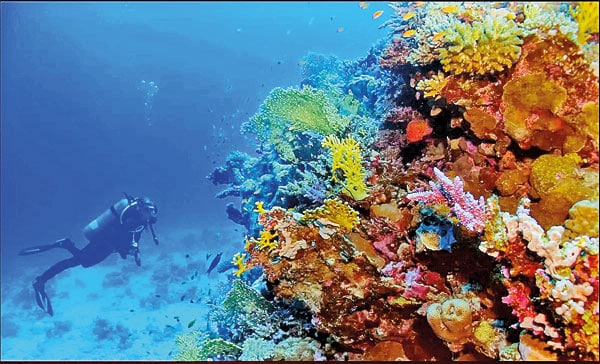
3. Why Deep Sea Mining Applications Set to Begin July 9 Would Allow a Few Corporations to Profit From Ecological Disaster
In the first of four articles about deep sea mining, this one explains how we got to the point of opening up 54% of the ocean, which is intended to be a “common heritage of mankind” per the United Nations, to deep sea mining.
In 1982, the United Nations passed Unclos (the United Nations Convention on the Law of the Sea). It turned 53 million square miles of seabed into national exclusive economic zones (EEZs) for use by coastal countries but protected deep sea outside the EEZs from use until a mining code was agreed. In June 2021, the Pacific nation of Nauru triggered a clause in Unclos that says that if a country applies to start deep-sea mining, the International Seabed Authority has precisely two years to produce a mining code.
On 9 July, the notice period was up. Legally, applications to mine will start.

4. Future of Deep-Sea Mining Hangs in Balance as Opposition Grows
The list of countries calling for a pause on deep-sea mining continued to grow this week ahead of a key moment that mining companies hope will launch the fledgling industry, and its opponents hope could clip its wings, perhaps for good. Ireland and Sweden became the latest developed economies to join critics, including scientists, environmental organizations, and multinationals such as BMW, Volvo, and Samsung.
The carmakers have committed not to use minerals mined from the seabed in their electric vehicles. No deep-sea mining contracts have yet been authorized, but efforts by the industry and some states, including Norway, have accelerated the race to mine for metals in the planet’s last unexplored frontier. It is a critical time. With a deadline due to expire on Sunday, commercial applications for deep-sea mining could be given the green light despite the absence of any regulations.

5. Canada Calls for Moratorium on Deep-Sea Mining
Canada has joined over a dozen nations, including France, Germany, Chile, and a number of Pacific island nations calling for a pause or ban on deep-sea mining in shared international waters. An international summit that gets underway Monday is a last-ditch attempt by the international community to finalize regulations for deep-sea mining and environmental protections around extracting metals off the seafloor.
The frenzied effort to develop the mining rules was triggered after the Pacific island nation of Nauru and its Canadian industry partner took advantage of a legal provision referred to as the “two-year rule.” The rule allows applicants to push the International Seabed Authority to come up with a mining code within 24 months or allow industry applications to go ahead, regardless or whether any regulations are in place.
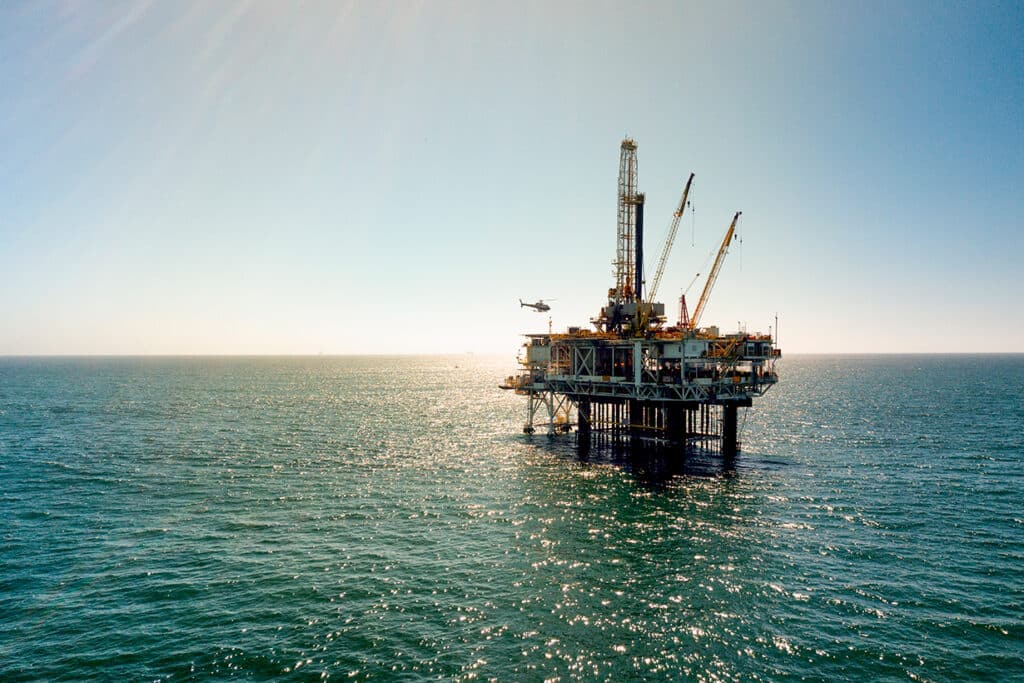
6. Deep Sea Mining Isn’t a Viable Climate Solution
On July 10, youth from around the world will gather at the International Seabed Authority (ISA) meetings, as delegates cast a vote on environmental regulations that will either stop deep-sea mining in its tracks or allow it to move forward. Many ISA delegates are advocating for the mining regulations to be finalized so that mining can start immediately.
Deep-sea mining projects could be given the green flag to source minerals needed to support green technological innovation—at the cost of damaging portions of our ocean floor in ways that could kill marine life and negatively impact people who depend on the ocean for sustenance and economic prosperity. Among those calling for a moratorium are our youth. The next generation, who will inherit this world and its problems, are the future scientists, entrepreneurs, and engineers who will discover new solutions, as well.

7. Canada’s Burgeo Shoreline One Step Closer to Becoming Marine Protected Area
The shoreline around Burgeo is one step closer to becoming a marine protected area, but Parks Canada says aquaculture will continue in the region. A memorandum of understanding was signed in June to begin a feasibility assessment of the study area, which would cover over 9,100 square kilometres of coastline from the eastern side of La Poile Bay to the western side of Bay d’Espoir.
The feasibility study will take at least two to three years to complete and will include the possibility of designating Sandbanks Provincial Park as a national park. “Aquaculture needs to be worked [into] coastal engineering in a way that enhances ecosystem services and protections and includes industry viability. The feasibility study is underway, and Parks Canada is working with a steering community made up of municipal and provincial governments along with Indigenous groups.

8. FWC Returns Over 200 Marine Life Species to Water
The Florida Fish and Wildlife Conservation Commission (FWC) returned over 200 marine life species to the water. The FWC says they received numerous tips about people taking excessive amounts of marine life. Officers issued 18 criminal citations and multiple warnings. The FWC says while residents are shell-seeking they should pay attention to whether an organism is living in the shell, because if there is there is a limit to how many shells you can take.
According to the FWC, there are harvest limits for all marine life, so if you see a shell with a creature using it as its home, your best bet is to leave it alone. Thanks in advance for your help in conserving our diverse marine life so it will be here for future generations to enjoy.

9. Tidal Range Power Stations: A Catalyst for Marine Conservation and Restoration
Tidal range power stations have been touted as a source of renewable energy, harnessing the power of the ocean’s tides to generate electricity. As the world continues to grapple with the effects of climate change and the urgent need to transition to cleaner energy sources, power stations have the potential to not only contribute to a more sustainable energy future but also act as a catalyst for marine conservation and restoration efforts.
By generating clean, predictable energy, power stations can help to reduce our reliance on fossil fuels and contribute to a more sustainable energy future. At the same time, they can provide valuable protection for coastal ecosystems and create new opportunities for marine conservation and restoration. As the world grapples with the challenges of climate change and the need to transition to cleaner energy sources, tidal range power stations could play a vital role.
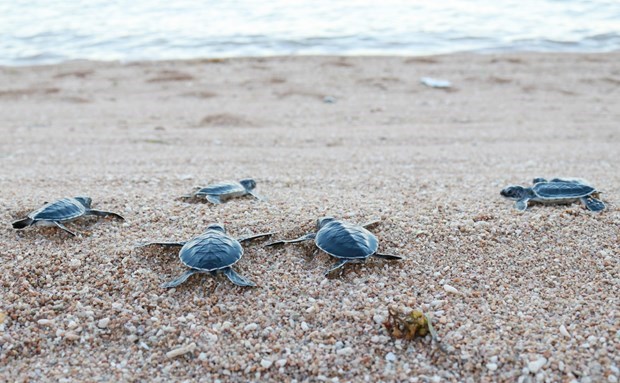
10. Nearly 22 Million Baby Turtles Released Back to Sea by Turtle Islands Park of Sabah, Malaysia
The Turtle Island Heritage Protected Area (TIHPA) is the world’s first transboundary marine protected area for marine turtles. Established in May 1996 when a Memorandum of Agreement (MOA) between the Government of Malaysia and the Republic of The Philippines was signed in Manila, it is one of the world’s most critical nesting grounds for endangered species of marine turtles. This region also supports several other flagship species of conservation concern, such as fishes, marine invertebrates as well as marine mammals.
Since the inception of this transboundary collaboration, there have been many achievements. On the Malaysia side specifically in the Turtle Islands Park of Sabah, there are records from 1979 until March 2023 that about 21,930,308 baby turtles have been released back to the sea. It is assumed that efforts undertaken by the Philippines side also yield encouraging results.
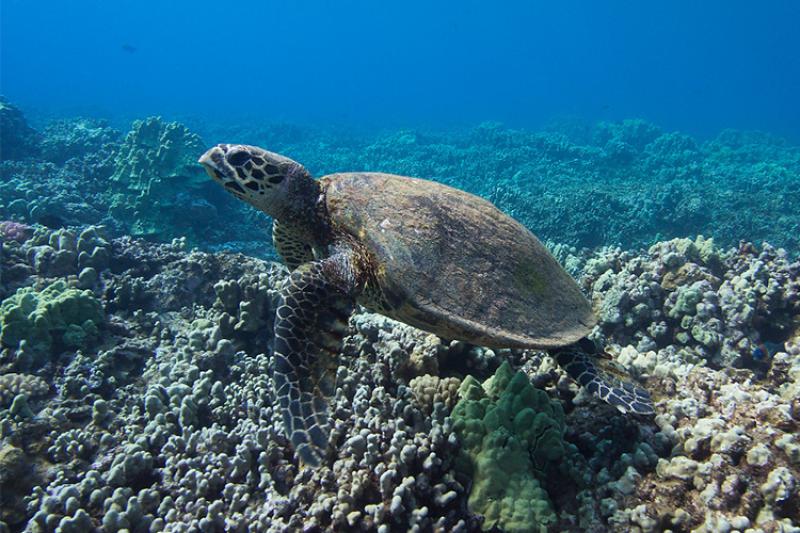
11. Sabah’s Green Turtles Thriving, but Hawksbill Population Dwindling
Sabah’s green turtle population is thriving, said Professor Dr. Juanita Joseph, a researcher from the Borneo Marine Research Institute at Universiti Malaysia Sabah. For many years, there were less than 1,500 turtle nestings a year at Pulau Sipadan. “In 2021, we observed an increase, up to 3,000 nestings. This is another proof that the green turtle population is thriving.”
She said through a better understanding of turtle reproductive behavior and close collaboration between the government, non-governmental organizations, and the community, most hatcheries in Sabah achieved an 80 percent success rate with turtle hatchlings. But Juanita reported bad news for the hawksbill turtle population. She said the hawksbill population was decreasing despite conservation efforts. She said one of the main threats for hawksbill turtles is the loss of nesting beaches.
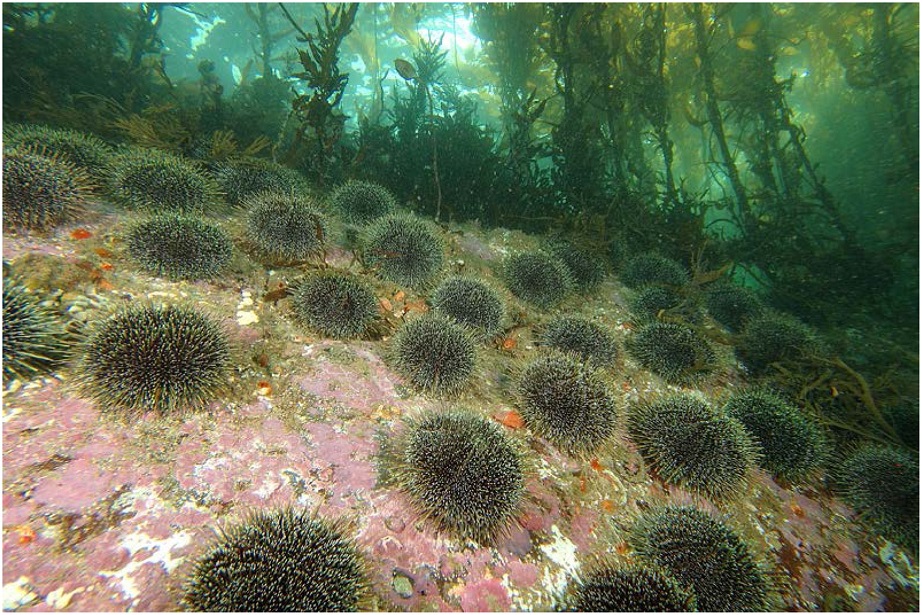
12. Sea Urchin Project Aims to Restore New Zealand’s Ocean Habitats
A New Zealand project is hoping to blend aquaculture and conservation to turn an ecological pest – sea urchins – into a culinary delicacy while enabling ocean habitat restoration. Aotearoa New Zealand’s rocky reef coastal ecosystems have undergone significant changes in the last few decades. We’re now facing a massive ecological challenge, but it’s one that most people don’t know about because it’s happening under the water.
Vast stretches of our seafloor that were once abundant with dense kelp forests have been overtaken by exploding populations of kina (sea urchins), which have grazed the kelp down to bare rock. EnviroStrat, in partnership with Ngati Porou Seafoods and restorative aquaculture company Urchinomics, is leading a pilot that blends fishing, aquaculture, and conservation to turn the starved kina into a lucrative aquaculture opportunity, while supporting the regeneration of our coastal kelp forests and marine ecosystems.
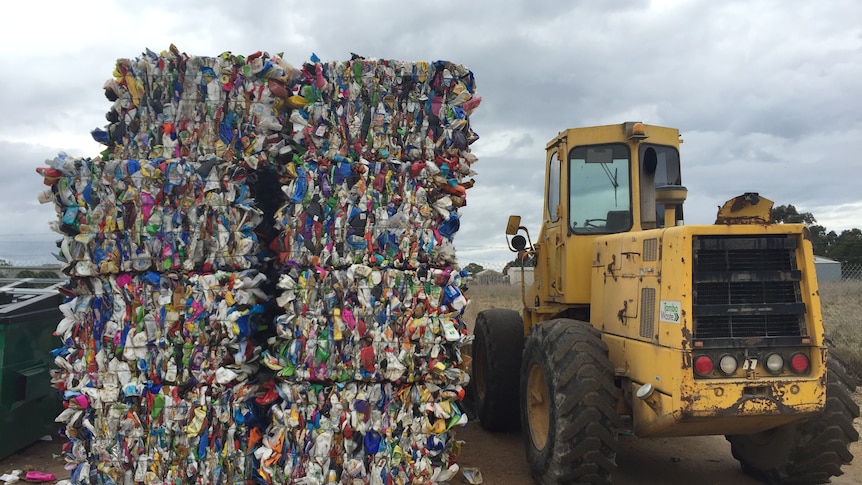
13. Australia’s Plastic Addiction Equals Emissions of 5.7m Cars: Report
Australia’s plastic consumption is causing significant greenhouse gas emissions and posing a threat to ecosystems and wildlife, according to a report commissioned by the Australian Marine Conservation Society (AMCS) and WWF Australia. The report, predicts that without action, emissions from plastic consumption will double by 2050. Research has shown that methane from gas and fossil fuel extraction is higher than previously estimated, making plastic more emissions-intensive than previously believed.
The report provides six recommendations:1. Reduce plastic production over the next decade.2. Transition to plant-based, recycled, or CO2-based plastic and invest in the necessary infrastructure.3. Shift to a 100% renewable energy system for the transport and manufacture of plastics.4. Maximize recycling when products are no longer reusable or repairable.5. Avoid incinerating plastics.6. Support international regulation to reduce plastic consumption and transition to a circular economy.
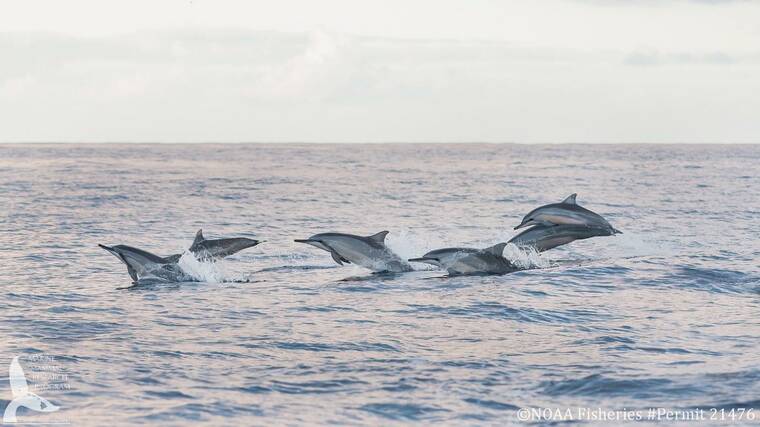
14. Dolphin Age & Pod Health Revealed With Drone Photos
Using unoccupied aerial systems (UAS), or drone photography, researchers are now able to determine the age structure of free-ranging dolphin groups. This work will aid in monitoring the health of dolphin populations and inform timely conservation efforts. The findings of the study that developed and applied this new technique were published in Ecology and Evolution. When dolphins come to the surface to breathe, they expose their blowhole and dorsal fin.
By measuring the distance between the two, researchers can estimate their total body length. Since total length is related to age, developed a technique of inferring age based on length for each measured dolphin within a group. “This method can help us quantify the age structure of free-ranging populations,” “Healthy dolphin populations usually contain a certain proportion of newborn, immature, and mature animals, while deviances from this distribution may be interpreted as a population growth or decline.”

15. A Tanzanian Village Saves Reefs From Blast Fishing and Mitigates Global Warming
In the village of Subutuni, in northern Tanzania, perforated concrete spheres emerge from the seaweed when the tide goes out in the late afternoon. Since 2008, the local fishing community and the Mwambao Coastal Community Initiative have been working on the construction and distribution of these artificial reefs, made by hand from limestone and concrete, and submerged in a designated no-fishing area.
“The material we use is composed of a neutral pH,” says Steve Atwell, who is in charge of submerging the artificial reefs. “We want to create a base for the reef to grow back naturally.”. The hope is that, once submerged, the holes will not be hollow, but covered with coral plants, contributing to the marine health of the area. “We have submerged a total of 65 artificial reefs and are now putting the finishing touches to the next 30”
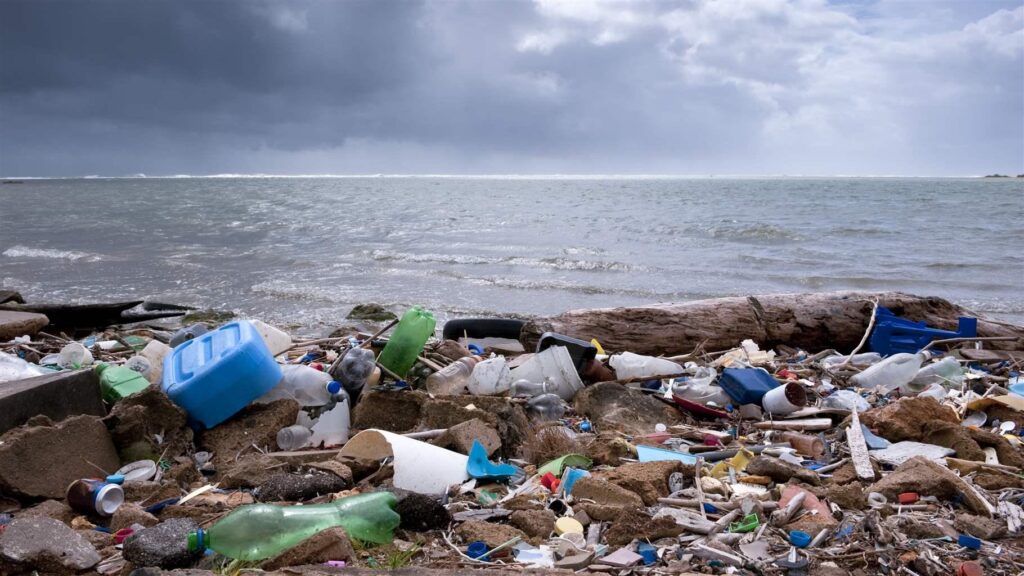
16. EU Environment Ministers Discuss Issues Such as Biodiversity and Plastic Pollution in the Oceans
In the second working session – ‘From the source to the sea. Measures to reduce marine litter’ – the Council discussed this pressing problem, which affects 88% of the species living in the oceans. Plastic pollution in the oceans is another key issue for the Spanish presidency, given the role of marine waters as a reservoir in defending against climate change and an essential carbon sink.
The process of pollution that has been accumulating over decades, especially with the presence of plastics, means not only the deterioration of the waters themselves but also a risk for the preservation of marine biodiversity and for a space that generates food for more than 2 billion people on the planet. In this context, the informal ministerial meeting in Valladolid served to discuss progress with the international negotiations on ocean protection and the prevention of plastic waste.
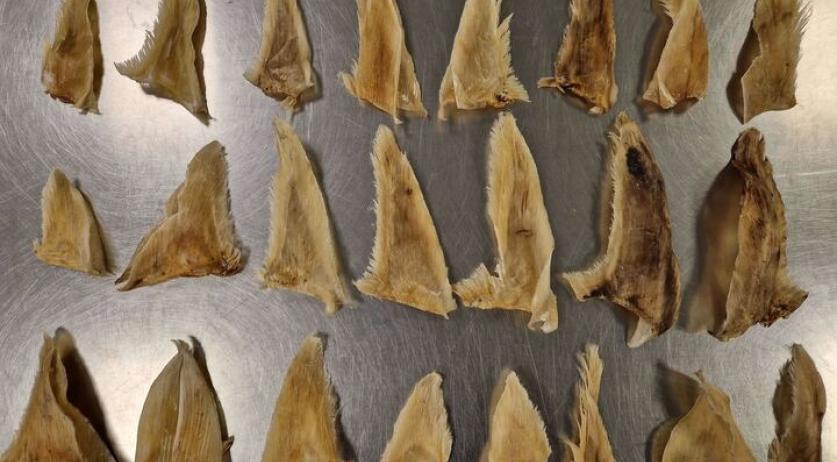
17. 4,000 Illegal Shark Fins Seized by Customs in the Hague
Illegal shark fins from over 1,000 sharks were intercepted by customs at a postal sorting center in The Hague, according to a statement by the Netherlands Enterprise Agency (RVO). The government agency is investigating whether Dutch nationals were involved. The Netherlands Enterprise Agency reported that the shipments were heading for the Netherlands from Hong Kong.
These shipments contained 120 kilograms of shortfin mako shark fins and 29 additional fins from the smooth hammerhead shark. The agency estimated that the seized cargo is equivalent to around 4,000 fins, suggesting the death of approximately 800 to 1,300 sharks. The shark fins originated from two shark species that are protected under the Convention on International Trade in Endangered Species (CITES), an international agreement that regulates the trade of endangered species.
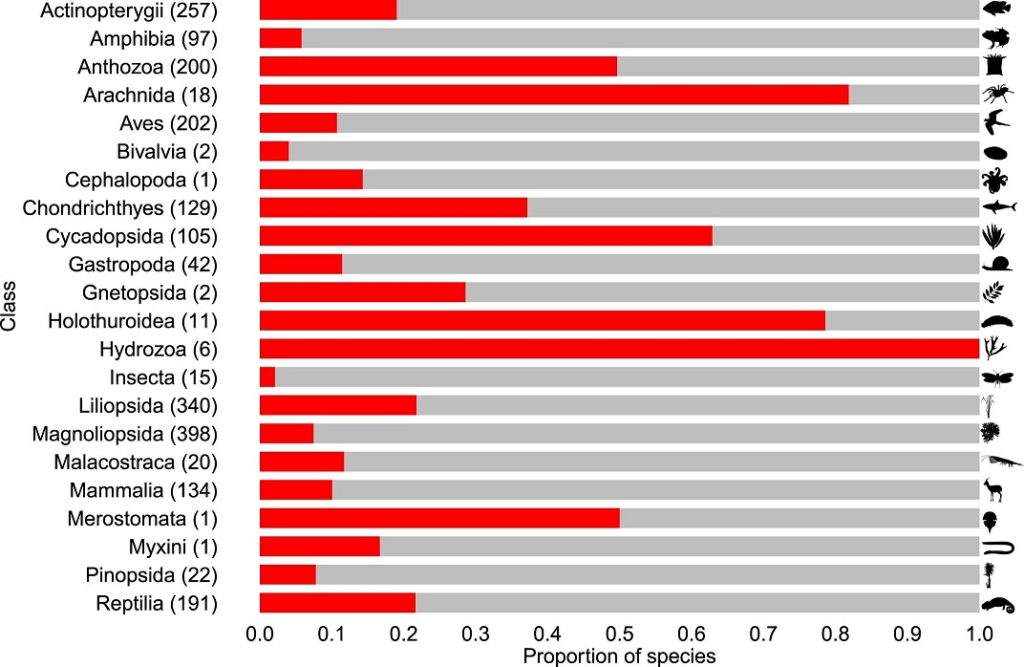
18. More Than 900 at-Risk Animal and Plant Species Not Covered by Global Trade Protections, New Research Shows
A study into the safeguarding of wildlife threatened by international trade has revealed that two-fifths of species identified as likely threatened by the international wildlife trade are not covered by the global agreement that regulates it. This means 904 species likely threatened by international trade are without international trade protections; this includes 370 species that are Critically Endangered or Endangered on the IUCN Red List of Threatened Species that are in need of protection from overexploitation from international trade.
This includes 31 species of shark and ray traded for their meat and fins. The study was conducted by a team of ecologists and wildlife trade experts at the University of Oxford, the International Union for Conservation of Nature (IUCN), the UN Environment Programme World Conservation Monitoring Centre (UNEP-WCMC), and ZSL.
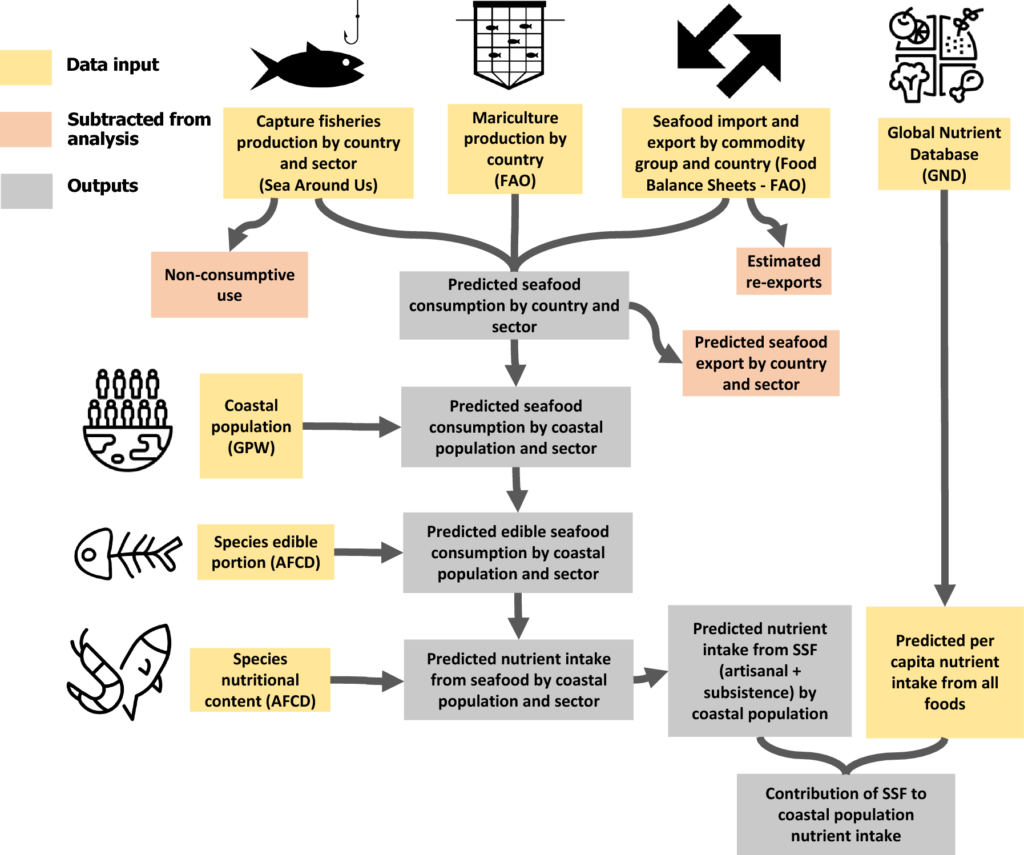
19. Nature’s Scientific Reports – Nutrient Supply from Marine Small-Scale Fisheries
Unhealthy diets and insufficient food are the leading cause of death globally, with over 2 billion people deemed food-insecure. Concurrently, more than 3.3 billion people around the world depend on fish for at least 20% of their animal protein intake, and in many developing countries, seafood accounts for more than 50% of the total animal protein intake. In addition to protein, seafood provides critical contributions of nutrients such as iron, zinc, calcium, iodine, selenium, vitamin B12, and fatty acids.
The human body needs consistent access to small quantities of these micronutrients to enable proper physiological and immune function. Beyond their role in filling micronutrient gaps in nutritionally vulnerable communities, seafood can displace the consumption of less healthy meats, and two servings per week can significantly reduce the risk of certain non-communicable diseases7 and prenatal and child mortality8, thus increasing life expectancy and quality.

20. How the UAE Is Fighting Plastic Pollution to Save Marine Life
It is a grim reality that plastic waste is responsible for the deaths of approximately 1.1 million marine creatures worldwide. This alarming fact begs the question of how the UAE’s Rebound Plastic Exchange (RPE) programme can help to safeguard the region’s marine life. Studies have shown that a typical UAE resident uses 450 plastic water bottles on average in a year, which translates into a total of 4 billion plastic bottles used annually.
Alarmingly, the ultimate destination for this waste is the ocean, causing a detrimental impact on marine life not just in the UAE, but across the entire Gulf. Last year, Dubai officials said that nine in 10 turtles found dead had plastic in their stomachs. The RPE programme was introduced partly in response to this alarming data.

21. More Seismic Blasting Will Threaten Marine Life
Australia – A seismic blasting operation between Victoria’s Otway coast and north-west Tasmania threatens our marine life, including southern right whales, blue whales, and bluefin tuna. SLB, and partner TGS lodged plans with Australia’s offshore oil and gas authority, NOPSEMA, for seismic testing over an area of 5.5 million hectares in Australia’s south-eastern waters. NOPSEMA has eleased those plans for public comment. AMCS Oil and Gas Campaign Manager Louise Morris said: “Offshore oil and gas exploration is dangerous even before a well is sunk.
Seismic blasting is deadly for marine life and can impact all levels of the food chain from its very foundations, killing zooplankton more than a kilometre away, to deafening whales. This is the biggest seismic blasting operation ever proposed for Australia’s south-eastern waters. Marine life will be bombarded by 220-250 decibel explosions of sound every 10-12 seconds for several months.
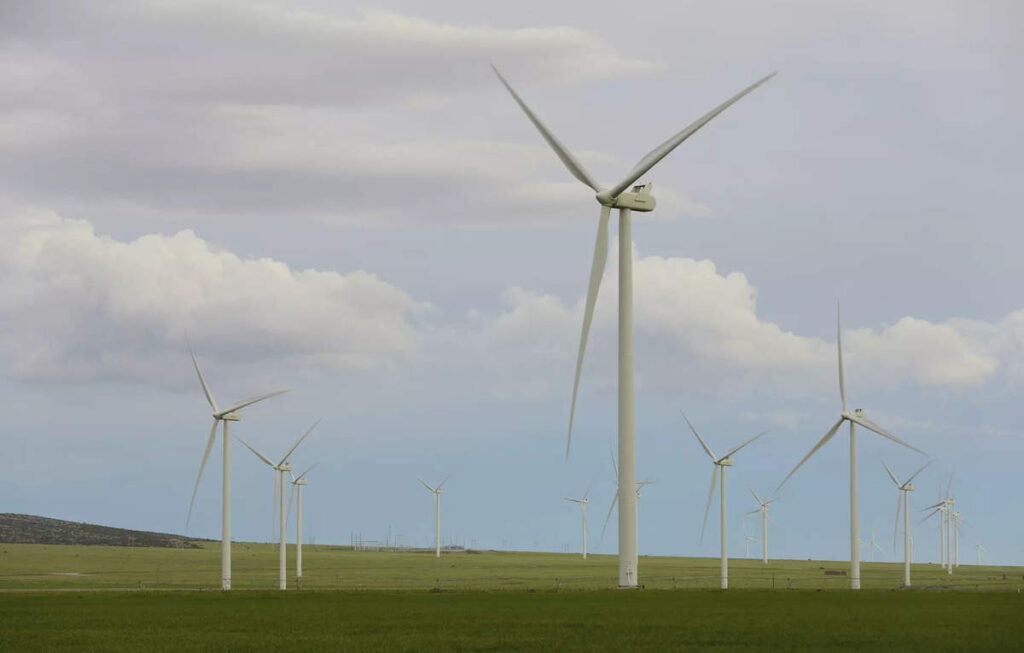
22. First German Offshore Wind Farm Auction Raises Billions
Germany on Wednesday auctioned off rights to build offshore wind power plants for the first time, raising billions of euros earmarked to help slash consumer electricity bills. Three sites on the North Sea and one on the Baltic brought in proceeds of 12.6 billion euros ($14.0 billion), the Federal Network Agency, a government regulatory body, said.
The winning offers came from energy giants BP and TotalEnergies among eight bidders for each of the sites. Ninety percent of the windfall is to be used to offset a spike in household electricity costs largely with grid expansion, with the remaining funds going toward marine conservation and sustainable fishing measures. It was the first time the agency used an auction to determine which companies could build wind farms, which are set to open by 2030.
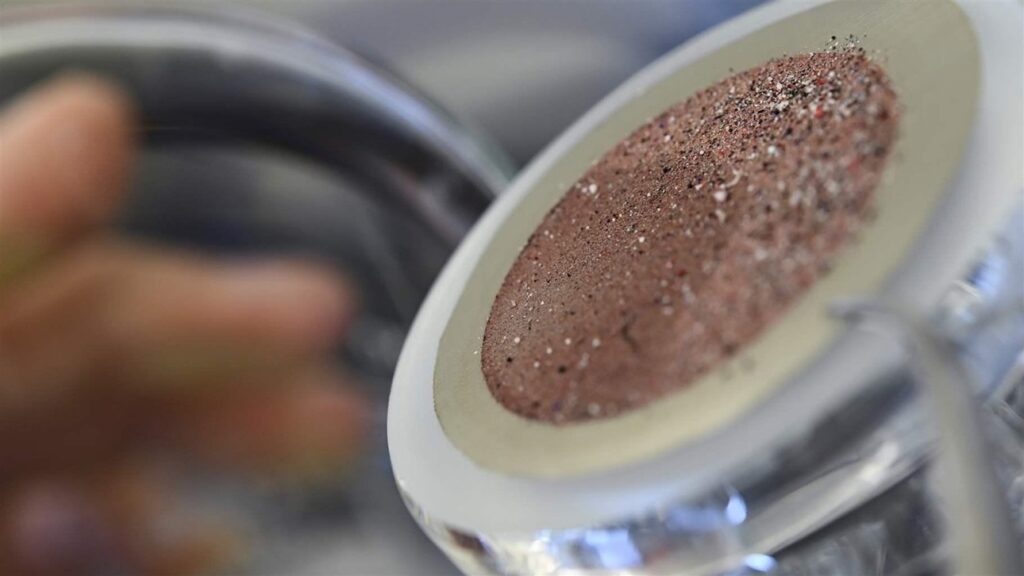
23. U.N. Plastics Treaty Must Include Provisions to Tackle Microplastics
As worries about plastic pollution have mounted in recent years, policymakers, businesses, and consumers have begun to act—mostly with a focus on plastic bottles, bags and other items commonly seen in the environment. An overlooked source of plastic pollution comes from microplastics, tiny pieces of plastic less than 5 millimeters in size. Their growing presence in the natural world is cause for concern.
Addressing microplastic pollution should be one of the treaty’s core obligations, and the agreement should include mandatory control measures to reduce emissions of both intentionally added microplastic ingredients and the unintentional release of microplastics. As part of this, the International Negotiating Committee on Plastic Pollution (INC-2) should develop flexible policies that can evolve to address emerging sources of microplastic pollution and account for new, valid science as it becomes available.




